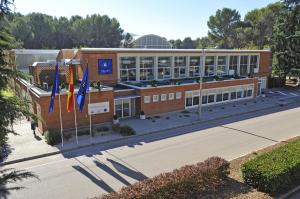The GNSS Service Centre (GSC), based within Madrid’s National Institute of Aerospace Technology (INTA), is an integral part of the European GNSS infrastructure. Inaugurated in 2013, it is responsible for providing the single interface between the Galileo system and the users of the Galileo Open Service (OS) and the Galileo Commercial Service (CS).
The GSC Nucleus, the precursor of a fully-fledged GSC, is already providing basic services to the user community via a web portal and user helpdesk. The one-stop-shop portal provides Galileo users with relevant information on the system status, Notice Advisory to Galileo Users (NAGUs), GNSS R&D material, and easy access to the OS helpdesk via a web contact form that enables users to submit requests to a dedicated helpdesk.
Already now the GSC Nucleus is producing substantial results. More than 17,000 visitors from 134 different countries have used the portal. To build on this momentum, an upgrade is being developed that will include such additional content and functionalities as:
- Publication of almanacs
- Automatic NAGU notifications
- User surveys
- Dedicated section to information on GNSS testing and simulation facilities
- Graphical representation of the Galileo constellation ground tracks, visibility map
As part of the full functionality, a new version of the GSC is being developed to support the dissemination of commercial data via a real-time interface. This is in line with the GSC’s objective to evolve over time in order to become fully-functional in support of Galileo Full Operational Capability (FOC) services.
The GSC is an additional tool and essential part of the European GNSS Agency’s (GSA) strategy for the development of GNSS applications, supporting innovation within industry and SMEs across Europe. “The GSC is yet another step in our dedication to support entrepreneurs, companies and researchers to develop their activities thanks to European Satellite Navigation data” says GSA Executive Director Carlo des Dorides.
Expanding on the essential role GNSS technology contributes to European industry, GSA Head of Market Development Gian Gherardo Calini notes the GSC will trigger and increase the paradigm change from a technology push to a user centric `pull´ approach. “As a civil system Galileo is close to the user and the GSC is one of the tools facilitating this connection,” he says. “not only will the GSC become increasingly important to interface with the users via the right channels and spread information, but also to re-circulate knowledge gained from the users themselves” he says.
A key component for developing this `pull´ strategy is the Galileo Commercial Service, which builds on the constellation’s civil nature. “The Commercial Service has the potential to improve the performance of existing location services for all user communities and will be a key element of Galileo’s service provision” says des Dorides. “It will also help further enhance Galileo’s economic added value in downstream markets.”
On this front, the Early Proof of Concept (EPOC) team recently tracked the encrypted Galileo E6B and E6-C signals broadcast by Galileo satellites. As a result, the Commercial Service loop has been closed using both encrypted and non-encrypted signals.
This marks a significant milestone for the CS program, as the tests verified the functionality of the CS signal’s encryption functionalities, with the data received containing authentication and high accuracy information previously generated outside the Galileo system, an essential feature to ensuring Galileo’s high accuracy and authentication services.


Keep this going please, great job!